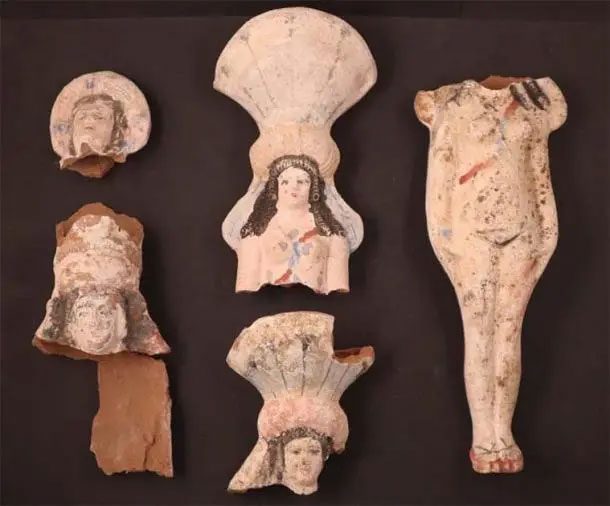The mummies placed in golden sarcophagi and the peculiar tomb in Minya, Eastern Egypt, have been described by archaeologists as a “heart-stopping discovery.”
The tomb, which contains well-preserved mummies, was excavated from the site known as Al-Bhanasa, surrounded by an array of unusual burial items.

Two of the 23 sarcophagi containing mummies within the tomb – (Photo: EGYPTIAN MINISTRY OF TOURISM AND ANTIQUITIES).
According to Ancient Origins, this discovery is seen as a groundbreaking archaeological find. The expedition, led by Dr. Esther Oince Milado from the University of Barcelona and the Near Eastern Institute (Spain), uncovered the tombs.
Inside the tomb are intricately designed sarcophagi, covered in gold. Surrounding them are pottery figurines that are entirely different from burial items found in other ancient Egyptian tombs.
The tomb is believed to date back to the late Ptolemaic Dynasty, which began in 305 BC and lasted nearly 300 years before falling into the hands of the Roman Emperor Octavian (Augustus).
Thus, the structure exhibits “transitional” characteristics, symbolizing the transition between the Ptolemaic and Roman periods.
The way the mummies were buried and the unusual burial items illustrate the gradual changes in funerary customs and beliefs.
Notably, a series of pottery figurines of the goddess Isis-Aphrodite, a “hybrid” Egyptian-Roman deity adorned with a crown of flowers, drew attention.

Statue of the goddess Isis-Aphrodite – (Photo: EGYPTIAN MINISTRY OF TOURISM AND ANTIQUITIES).
Additionally, scientists discovered fragments of papyrus and a clay seal. Many mummies were wrapped in colorful rolls of papyrus.
Most notably, two mummies were found with a “second tongue” made of gold in their mouths, a custom that reflects the Roman influence during their dominion over Egypt.
The collective tomb is a large chamber situated underground, featuring a stone well leading down and a mudbrick door.
Above the tomb lies the remains of a destroyed building, with what remains still displaying intricate decorations depicting various plants, pigeons, and cobras, indicating that this location has a rich history.
- Decoding the mystery of the “frog-eating dragon” medieval belt buckle in the Czech Republic
- Visiting a friend’s house and discovering a “mountain of gold and silver worth over 10 billion”: Before the joy could settle, a long-standing friendship was strained!
- China discovers a 4,300-year-old network of tunnels in a stone city




















































